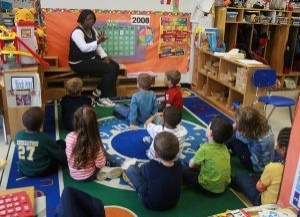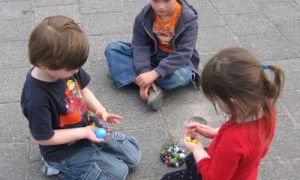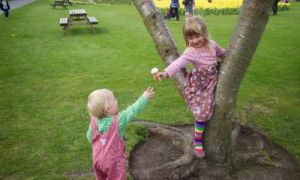As Educators when communicating with Parents (through verbal or non-verbal communication), there will be times where we need to discuss issues or concerns that may arise. During this time, we may use negatives to describe the child's behavioural or personality traits (weaknesses) that they may be displaying. However, these weaknesses are hidden strengths, forming the chid's unique personality and abilities.
Traits Commonly Perceived As Weaknesses
Some children's behavioural or personality traits can be considered annoying and tiresome to have to deal with. However, viewing these in a more positive light can help you develop the child's weakness into a strength and understand how to best support the child's overall emotional development and self-esteem.
Turning Weakness Into Strengths
The following are a list of negative traits (weakness) that a child may display that need to be communicated to parents in order to solve issues such as behavioural problems. Instead of listing these as a negative, we should accept these specific traits as a strength and support the child in their sense of self. Here are weaknesses turned into strengths.
- Talking too much - Effective Communicators, Articulate.
- Acting Out - Communicates Deeper Underlying Emotions and Difficulties.
- Clingy - Affectionate
- Compulsive- Efficient/Attention to detail
- Defiant - Strong Beliefs, Courageous
- Dramatic - Emotionally Aware/Dramatic
- Fearful - Thoughtful/Careful
- Goofy/Silly - Joyful/ Entertaining
- Loud - Exhubrant/Confident
- Manipulative - Gets Own Needs Met
- Fussy - Strong Sense Of Self
- Mean - Powerseeking
- Messy- Practicing Skills/Learning
- Lazying Around/Day Dreaming - Out Of The Box Thinkers, Problem Solvers, Creative.
- Shy - Critical thinkers.
- Naughty - tactile and experiential learning, curious/Independent
- Quiet - Thoughtful/Reflective
- Bossy/Stubborn - firm and assertive/leader
- Spoiled - Loved
- Talks Back - Courageous/Hohents
- Tattletale - Seeks Justice
- Wants Attention - Speaks Out Needs
Seeing these weaknesses as actual strengths enable you to focus on these emerging traits and provide a new perspective to support and nurture the child.
The list above will also help you when writing documentation and reports and when communicating with parents. There is no need to talk negatively about a child, focus on the child's strengths that they may be displaying and collaborate together on how to support these.
Reference:
Mina Dilip, Ways To Turn Your Child’s Weaknesses Into Strengths







 Working as a childcare professional can be a challenge especially when dealing with behavioural problems which may arise. The techniques we use when dealing with
Working as a childcare professional can be a challenge especially when dealing with behavioural problems which may arise. The techniques we use when dealing with There are different types of behaviour that children can display and sometimes it can be hard to manage, especially if a child is having behavioural
There are different types of behaviour that children can display and sometimes it can be hard to manage, especially if a child is having behavioural As a parent, your behavioural expectations of your child can be higher than what is actually developmentally appropriate for your child's age.
As a parent, your behavioural expectations of your child can be higher than what is actually developmentally appropriate for your child's age.
 As Educators, there will be many instances where you will need to write about a child's behaviour. For a behaviour management plan, assessments, half-yearly or
As Educators, there will be many instances where you will need to write about a child's behaviour. For a behaviour management plan, assessments, half-yearly or As Educators when communicating with Parents (through verbal or non-verbal communication), there will be times where we need to discuss issues or concerns that may
As Educators when communicating with Parents (through verbal or non-verbal communication), there will be times where we need to discuss issues or concerns that may Challenging Behaviour is when a child does something that hurts themselves and/or other people.
Challenging Behaviour is when a child does something that hurts themselves and/or other people.
 As part of your child's development it is normal for your child to have anxiety and fears. A baby commonly shows a fearful sign to
As part of your child's development it is normal for your child to have anxiety and fears. A baby commonly shows a fearful sign to It's always difficult to bring up behavioural issues with parents, it can be nerve wrecking to tell a parent that their child misbehaves but that
It's always difficult to bring up behavioural issues with parents, it can be nerve wrecking to tell a parent that their child misbehaves but that All children deal with anger on a daily basis. Thinking about it as a child, there is a lot to be angry about. Elder people
All children deal with anger on a daily basis. Thinking about it as a child, there is a lot to be angry about. Elder people It is important to understand that your child behaviour problems could not just be from attention seeking. There are many factors to take into consideration
It is important to understand that your child behaviour problems could not just be from attention seeking. There are many factors to take into consideration


